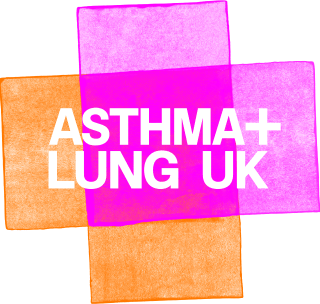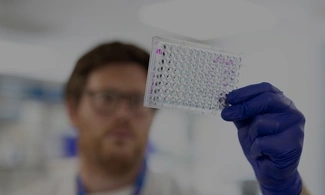Why your medicines might change


Your GP may recommend changing your medicines to help you find the best treatment plan for managing your asthma. There are lots of different asthma medicines and inhalers available to help you find the one that works for you.

You only have a blue reliever inhaler
If you only have a blue reliever inhaler to use when you get symptoms, your GP or nurse should talk to you about changing your inhaler to an anti-inflammatory reliever (AIR) inhaler.
Unlike blue reliever inhalers, AIR inhalers contain both a reliever medicine and a low dose of steroid to treat inflammation in your airways.
Each time you use an AIR inhaler, it helps to relieve your symptoms and reduce inflammation in your airways, lowering your risk of more symptoms.
The latest guidelines recommend using an AIR inhaler if you have symptoms less than twice a month.
Updated guidelines for asthma treatment
The latest asthma guidelines from NICE (National Institute for Health and Care Excellence) recommend that:
- everyone with asthma needs treatment with inhaled steroids
- no one with asthma should only have a blue reliever inhaler.
Your symptoms are getting worse
Your GP or asthma nurse may suggest changing your inhaler and medicines if your asthma symptoms are getting worse.
They may prescribe a MART (Maintenance and Reliever Therapy) inhaler if:
- you're on an AIR-only treatment plan to relieve symptoms, but you need to use your inhaler more often. This can be a sign that your asthma symptoms are not well controlled.
- you're using a separate preventer and reliever inhaler, but you're still getting regular asthma symptoms.
On a MART treatment plan, you take your inhaler every day as prescribed, as well as when you get symptoms.
To make sure your inhaler is right for you
If you find it hard to use your inhaler or spacer, you could change to one that's easier for you to use.
Your GP, asthma nurse or pharmacist may be able to suggest a different inhaler that:
- does not need a spacer
- has a dose counter on the side
- is small or easier to carry
- is easier to clean
- is easier to use when you have another condition, like arthritis.
To change to a lower-carbon inhaler
Your GP or asthma nurse might talk to you about changing your inhaler to a lower-carbon inhaler.
Dry powder inhalers (DPIs) and soft mist inhalers (SMIs) are both types of lower-carbon inhalers. These inhalers do not contain the greenhouse gas propellants that are found in some pressurised metered-dose inhalers (pMDIs).
Lower-carbon inhalers are not suitable for everyone. If you need to take a pMDI, there may be a lower carbon version available.
Read more about lower-carbon inhalers.
"The most important thing is having an inhaler that you can use correctly and that helps you manage your lung condition. If you’re unable to change to a lower-carbon inhaler, there are other things you can do to manage your asthma and help the environment at the same time. These include using a spacer with your pMDI, using your inhaler correctly and taking your inhalers as prescribed."
Dr Andy Whittamore, Asthma + Lung UK’s GP
To save the NHS money
Different companies make medicines using the same ingredients, but some brands are more expensive than others.
Your GP may prescribe you a different brand of inhaler because it works just as well, but costs less and saves the NHS money.
There are low medicine supplies
Your local pharmacy could run out of the medicine you usually use. This could happen for a lot of reasons, like a sudden increase in demand or global events, which can cause manufacturing issues.
If this happens, you could speak to your GP, asthma nurse or pharmacist to find a different medicine that works for you.
Read more about medicine shortages.
Common questions about changing medicines
Your GP will only consider changing your medicines or inhaler if they consider it safe.
It’s important that you're happy with your asthma treatment. If you have any concerns, you can speak to your GP, asthma nurse or pharmacist. They're there to help you find the best treatment for you.
If your GP or asthma nurse prescribes you a new type of inhaler, they should show you how to use it.
It’s important to know the correct inhaler technique, so that you can get the full benefit of your medicine.
You can also watch our short inhaler videos to find out how to use your inhaler.
All medicines have possible side effects, but this does not mean that you'll get them.
Talk to your GP, asthma nurse, or pharmacist if you're worried about side effects.
Find out more about the side effects of asthma medicines.
If you’ve been given a medicine which has a different name, it might be because you’ve been given a different brand of your medicine.
The NHS sometimes uses other brands because they cost less, but work just as well, and contain the same ingredients.
If you have any questions about your medicines, speak to your GP, asthma nurse or pharmacist.
There are a few reasons why your inhaler might be a different colour.
Your healthcare professional may have prescribed you a different:
- brand of inhaler
- type of inhaler
- dose of inhaler.
You can speak to your GP, nurse, or pharmacist if you have any questions about your inhaler. They can check and reassure you that your inhaler is right for you.
If you're on an AIR (anti-inflammatory reliever) or a MART (Maintenance and Reliever Therapy) treatment plan, you'll be given one inhaler.
They're a type of combination inhaler that contains both the steroid preventer medicine and reliever medicine.
Because AIR and MART inhalers contain your reliever medicine, you do not need a blue reliever inhaler as well.
People with asthma sometimes tell us that they worry about not having a blue reliever inhaler. It's important to speak to your healthcare professional about your concerns. You can also call our Helpline.
Take your old inhalers to your local pharmacy, instead of binning them.
Your pharmacy can get rid of them in the most environmentally friendly way. They can also dispose of other old or unwanted medicines safely.
There are other things you can do to help your asthma and the environment at the same time.
Some inhalers are linked to the tobacco industry. If you feel uncomfortable using a device or brand that is linked to the tobacco industry, you can ask to change your medicine.
Whatever happens, your priority and that of your healthcare professional is to make sure that you have medication that is safe and works for you.
Do not stop taking the inhalers that you have been prescribed without speaking to a healthcare professional.
Find out more about inhalers and the tobacco industry.
Getting used to your new medicines
Make sure to:
- Get into a good routine and take your medicines as prescribed.
- Track your symptoms. You could keep a symptom diary or record your peak flow scores.
- Check your inhaler technique. You can use our short videos to find out the best way to take your medicines.
- Update your asthma action plan. Add your new medicines or inhalers, so that you know how to manage your asthma well.
- Book a follow up appointment. You should have an appointment with your GP or asthma nurse 8 to 12 weeks after your medicines change. This is a good opportunity to talk about how your new medicines are working.
- Attend your annual asthma review. You and your GP can check you're on the right treatment plan for you.

Get support
Call our helpline for support with your condition. Get advice on your medicines, symptoms or travelling with a lung condition, or just call us to say hello.








